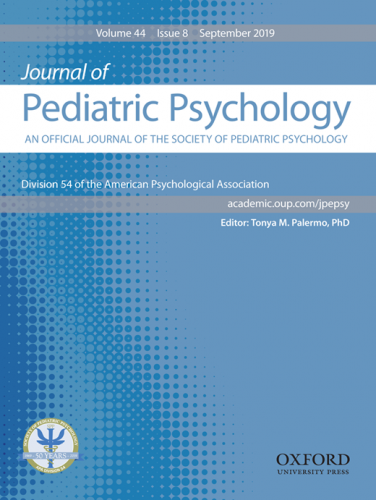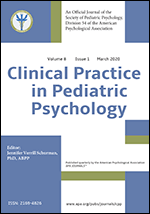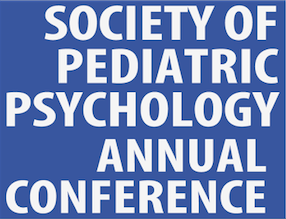Fact Sheet: Traumatic Brain Injury in Children and Adolescents
Traumatic brain injury (TBI) is diagnosed when a blow to the head or a penetrating head injury results in disruption of normal brain functioning. A TBI can be mild, moderate or severe in nature, depending on the degree of alteration in a child or adolescent’s acute mental status or level of consciousness. Individuals who sustain mild to moderate TBI may experience only a brief change in mental status whereas a lengthy period of amnesia and/or unconsciousness may occur in those who experience a severe injury. The majority of TBIs sustained each year are mild (70-90% of TBI related ED visits). Mild TBIs are commonly referred to as concussions.
Prevalence and Course
The Center for Disease Control (CDC)’s most recent 2014 report indicates that 812,000 youth were treated for TBI-related injuries in the United States. The leading cause of TBI in children is falls (49%), while the second leading cause is hitting or being hit by an object (28%). The course can vary greatly depending on severity of injury. Children sustaining mild TBI may have few, if any, residual symptoms; however, a subsample of youth can have persistent consequences. Children with more severe or penetrating injuries may experience adverse long-term changes in functioning.
Health and Psychosocial Consequences
Children who have sustained TBI can experience a variety of symptoms that include headaches, coordination problems and motor functioning, sensory abnormalities, deficits in attention, memory, and executive functioning, learning difficulties, and changes to mood and emotional regulation, behavioral disruption, and substance use. Additionally, children who have sustained a moderate to severe TBI are at risk for decreased life satisfaction, deficits in adaptive functioning, lower rates of participation in activities, and poor social engagement with peers. These changes in psychosocial functioning appear to persist over time.
Evidence-based Assessment
Severity of TBI is most commonly assessed using the Glasgow Coma Scale, as well as other indicators of injury severity such as duration of unconsciousness and neuroimaging findings. A comprehensive neuropsychological assessment that evaluates intellectual functioning, attention, memory, executive functioning, and language abilities is recommended to identify potential deficits and facilitate school re-entry. Injuries in younger children may have cognitive and/or behavioral consequences that are not apparent until the child is older and more advanced executive and social skills are required. Thus, long-term follow-up is warranted. The sequelae of TBI overlap with other conditions (e.g., ADHD) and symptoms (e.g., sleep disturbances, pain); thus, accurate history taking is critical for identification and intervention.
Culture, Diversity, Demographic and Developmental Factors
National data reveal increased risk of TBI in children under the age of 4 years and older adolescents ages 15 to 19 years, and for males as compared to females. However, there are sports (e.g., lacrosse, horse jumping, field hockey) where young women are at higher risk than boys beyond simple participation rates. Low socioeconomic status and familial dysfunction also may negatively influence behavior in children with TBI. Finally, younger age and greater severity of injury are associated with worse functional outcomes.
Evidence-based Interventions
Few psychological interventions for youth with TBI have been evaluated in randomized clinical trials. However, findings from the extant literature indicate that applied behavior analysis (ABA), positive behavioral interventions, and cognitive training in the areas of attention, memory, and problem-solving abilities, as well as self-monitoring and self-regulation, may provide benefit. Youth may also benefit from psychosocial support for distress related to the TBI. Family education about TBI is associated with positive health outcomes. Family focused interventions have shown promise in reducing caregiver depression, as well as conflict between caregivers and adolescents who have sustained at TBI. Children transitioning back into the classroom may also require additional accommodations such as an Individualized Education Program (IEP). An IEP may help secure the provision of necessary resources, establish communication between the school and parents, and serve as a means of monitoring progress. This may be a critical step depending on the severity of the injury as many educators lack the training necessary to understand the implications of TBI and what academic and psychosocial supports may be necessary to support recovery and foster long-term student success.
Authors: Chandler Puhy, Michael Silverstein, and Brian Daly
Date of last update: October, 2019
References
- Centers for Disease Control and Prevention (2019). Surveillance Report of Traumatic Brain Injury-related Emergency Department Visits, Hospitalizations, and Deaths—United States, 2014. Centers for Disease Control and Prevention, U.S. Department of Health and Human Services.
- Centers for Disease Control and Prevention. (2018). Report to Congress: The Management of Traumatic Brain Injury in Children, National Center for Injury Prevention and Control; Division of Unintentional Injury Prevention. Atlanta, GA.
- Catroppa, C., Anderson, V.A., Morse, S.A., Haritou, F., & Rosenfeld, J.V. (2008). Outcome and predictors of functional recovery five years following pediatric traumatic brain injury. Journal of Pediatric Psychology, 33(7), 707-718. doi: 10.1093/jpepsy/jsn006
- Ettel, D., Glang, A. E., Todis, B., & Davies, S. C. (2016). Traumatic brain injury: persistent misconceptions and knowledge gaps among educators. Exceptionality Education International, 26(1), 1-18.
- Faul, M., Xu, L., Wald, M. M., & Coronado, V.G. (2010). Traumatic brain injury in the United States: Emergency department visits, hospitalizations and deaths 2002-2006. Atlanta, GA: Centers for Disease Control and Prevention, National Center for Injury Prevention and Control.
- Lumba-Brown, A., Yeates, K. O., Sarmiento, K., Breiding, M. J., Haegerich, T. M., Gioia, G. A., ... & Joseph, M. (2018). Centers for Disease Control and Prevention guideline on the diagnosis and management of mild traumatic brain injury among children. JAMA Pediatrics, 172(11), e182853-e182853.
- Narad, M. E., Minich, N., Taylor, H. G., Kirkwood, M. W., Brown, T. M., Stancin, T., & Wade, S. L. (2015). Effects of a web-based intervention on family functioning following pediatric traumatic brain injury. Journal of Developmental and Behavioral Pediatrics, 369(9), 700-707. doi: 10.1097/DBP.0000000000000208.
- Raj, S. P., Shultz, E. L., Zang, H., Zhang, N., Kirkwood, M. W., Taylor, H. G., … & Wade, S. L. (2018). Effects of web-based parent training on caregiver functioning following pediatric traumatic brain injury: A randomized control trial. Journal of Head Trauma Rehabilitation, 336 (6), E19-E29. doi: 10.1097/HTR.0000000000000388.
- Utley, C. A., Obiakor, F. E., & Obi, S. (2019). Teaching young children with traumatic brain injury in inclusive classroom settings (pp. 139-155). Emerald Publishing Limited. doi:10.1108/S0270-401320190000034009.
- Wade, S. L., Walz, N. C., & Bosques, G. (2009). Pediatric traumatic brain injury and spinal cord injury. In M. C. Roberts & R. G. Steele (Eds.), Handbook of pediatric psychology (4th ed., pp. 334-349). New York: The Guilford Press.
- Yeates, K. O. (2010). Mild traumatic brain injury and postconcussive symptoms in children and adolescents. Journal of the International Neuropsychological Society, 16, 953-960. doi: 10.1017/S1355617710000986



